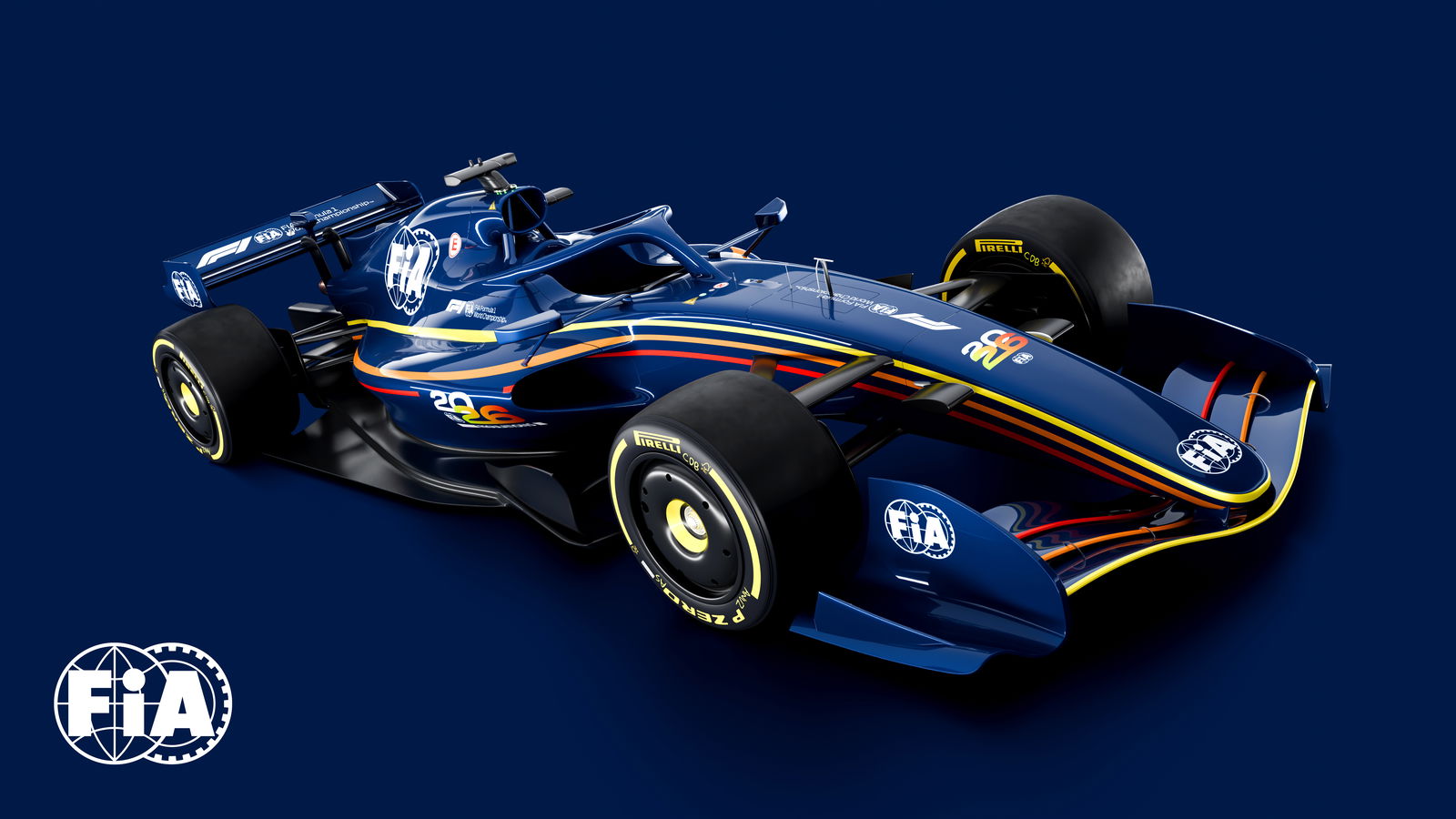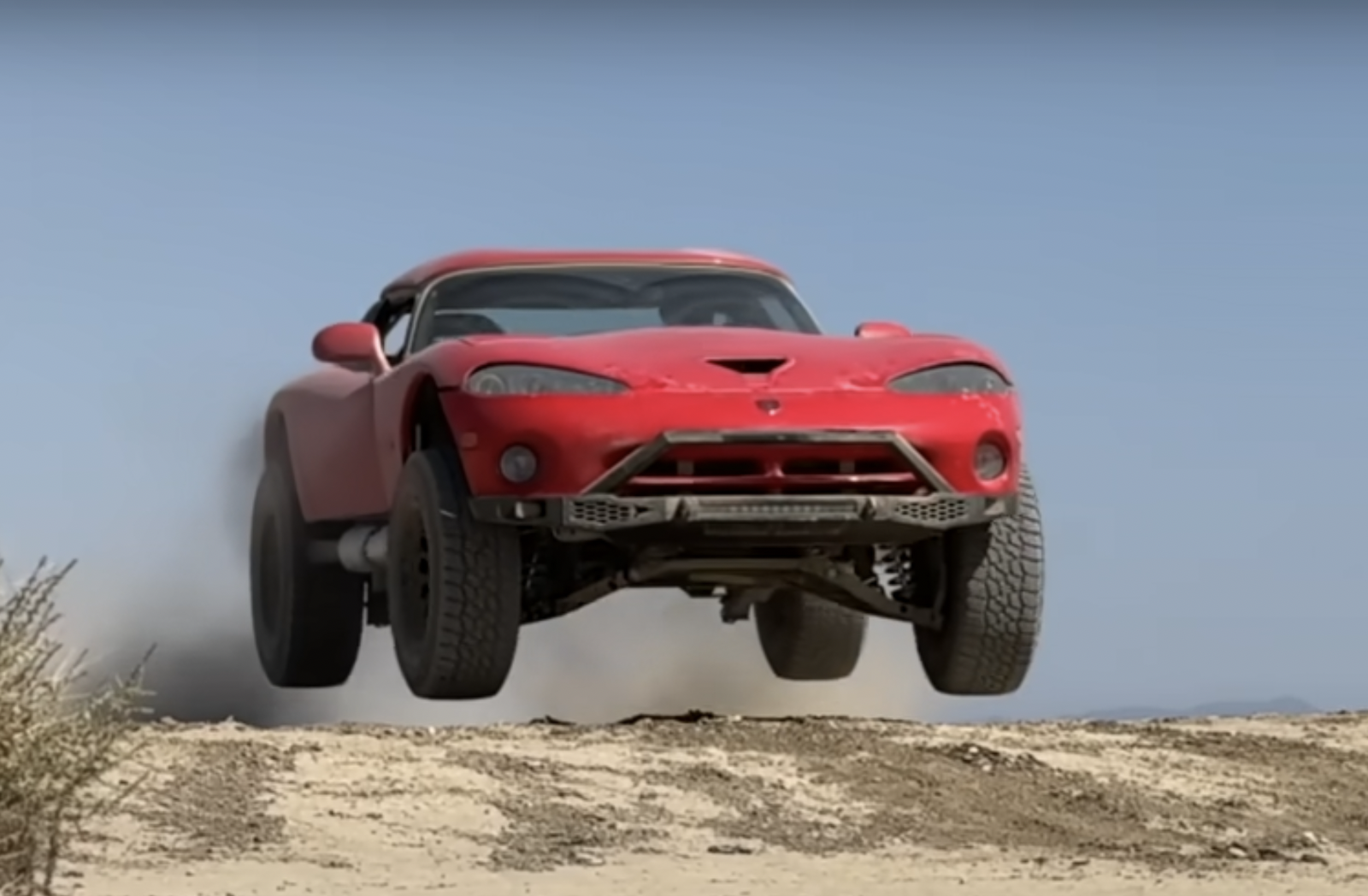An Idiot's Guide To The 2026 Formula 1 Regulations

Today the FIA’s plans for the next big regulation change in Formula 1 were revealed. Agility, competitiveness, and safety were the key aims of their vision.
It’s a gargantuan challenge for F1’s governing body. The cars that roll into testing in early Spring 2026 must simultaneously meet the demands of F1’s owners, their sponsors, the teams, the automotive industry giants that they serve, the drivers who race them, and the fans who tune in every week.
In the words of FIA Single Seater Technical Director Nikolas Tombazis, these cars will be "Lighter, more powerful and more focused on driver skill. The 2026 FIA Formula 1 Technical Regulations have been designed to provide closer racing among drivers, increase the competition between teams and improve the spectacle.”

What is changing in 2026 for Formula 1?
The power units
The key headlines were a huge rebalancing in the source of the power units', erm, power. There will be both more total power (hold your applause, Jeremy), and a greater proportion of that power coming from the battery system.
The FIA’s numbers state that the ICE will now produce around 536bhp (down from the current value of 737-871bhp) while the hybrid system’s power will effectively triple its current output to a total of 470bhp in 2026. That's roughly a 50:50 split, compared to the approximate 85:15 split that the current cars have. The MGU-H is also nowhere to be found in the new rules, meaning that all the regenerative systems will rely solely on the kinetic energy of the braking system.
The FIA is also keen to state that the fuel for that remaining ICE element will be ‘100 per cent sustainable’ as its fleet of six power unit manufacturers seeks to align these changes with their road car engineering (and marketing) departments. All six of the 2026 PU manufacturers have agreed to this rule set. Mercedes, Ferrari, Ford, Honda, Audi, and Renault will all have critical decisions to make over the next few years as they balance design work on current cars with preparation for the future.
Net zero carbon by 2030 remains a core part of F1 and the FIA’s messaging on the topic of engines, emissions and electrification but the implementation of sustainable fuels from 2026 onwards hopefully means that some form of combustion remains a certainty… for now.

ERS is the new DRS and front wings are the new rear wings
Another key element of the changes announced today was the shifting role of ERS and DRS in overtaking. At present, and as many F1 fans will know, in race conditions if a driver is under one second behind the car in front that driver gains the ability to open a slot gap in the rear wing.
Now the key change that we learnt about today, along with the addition of active front-wing aerodynamics, is that DRS use will no longer be restricted by this one-second margin. Instead, it will be a freely available system on both the front and rear wings. Throughout the race drivers will swap between high and low drag modes (dubbed Z and X modes in the FIA’s documentation) to achieve the optimal balance of race pace and tyre management.
It will be the electric power deployment that will now be the time gap conditional overtaking device. A manual override, enabled by close following proximity, will give the following car its full 470bhp capacity as well as a 0.5MJ boost at speeds up to 210mph while the leading car’s power will taper off once it reaches 180mph.
Gone will be the days of questioning whether Lando Norris can break into Max Verstappen’s ‘DRS gap’ in Imola, or the days of Leclerc and Verstappen’s farcical game of ‘DRS chicken’ at the 2022 Saudi Arabian GP in which neither driver wanted to lead at the detection point - though similar events may be caused by the new system if it proves equally valuable at the high speed circuits.
Aerodynamics and chassis
Alongside the changes to DRS and its new home both on the front and rear wings, the cars are getting smaller. “Smaller” requires a little context though as F1 cars have only grown over recent years, so it may be more appropriate to say they have reversed prior increases in size. A 10cm width reduction and a 20cm reduction in length are coupled with a 30kg weight reduction - decisions centred around the FIA’s goals of nimbleness and agility. Front and rear tyre width will also be reduced by 2.5cm and 3.0cm respectively.
A reduction in downforce and drag should mean an increase in oversteer and instability behind the wheel. As Tombazis mentioned the need for driver skills will be critical, F1 must remain both a drivers' and a constructors' world championship.
Despite this though, taking away downforce is rarely something that the FIA ever actually succeeds in doing in the long run as the teams pour hundreds of millions of pounds into their CAD systems and wind tunnels to claw back that loss. The FIA then takes more downforce off, the teams claw it back, and the internal engineering cycle continues.

Safety and sustainability
The front and side crash structures of the cars have been strengthened in an attempt to protect drivers from secondary impacts after high-speed incidents. The new design contains within it a staged system in which an ancillary impact structure would survive the initial crash and protect the driver from any follow-up incidents.
Consider the situation of George Russell at Albert Park earlier this year, Carlos Sainz in the pouring rain of the 2022 Japanese Grand Prix, or how Lando Norris’ McLaren bounced across the exit of Eau Rouge in qualifying for the 2021 Belgian Grand Prix. Left stranded on track in cars already damaged by the incidents that stranded them - it was a vulnerable position to be in and one that the FIA is looking to give the drivers better protection in.
Additional protection has also been added to the roll hoop, an area of focus highlighted by Zhou Guanyu’s dramatic flip on lap 1 of the 2022 British Grand Prix. It will now be able to withstand a load of 20G, up from 16G in its current iteration.
What will this mean for F1’s future?
The 2026 regulations are now set to be officially ratified by the World Motor Sport Council on June 28, but little prevents the FIA from tweaking and iterating them further. We do, however, expect the core of them to stay in place. The FIA’s messaging today was keen to stress just how thoroughly all the stakeholders of the sport had been involved in the process. The goal is, of course, a tight championship fight and for a range of differently designed cars to each arrive at similar lap times through their own innovation and ingenuity. Whether the FIA’s 2026 technical rules really level the playing field, or pitlane, in any capacity beyond their own press releases will be a question we won’t be able to answer until testing in two years’ time.

On the whole, the power unit changes are more significant than the aerodynamic and chassis elements, but a certain Adrian Newey will surely be following the details of the new technical rules closely.
Could the opportunity to design a red Italian thoroughbred for the awe-inspiring driver duo of Leclerc and Hamilton entice him back to the drawing board for one final time? We don’t know yet, but with his experience at Williams in the early ’90s, F1’s most successful designer is well-positioned to take on the challenge of active aero systems, just as he was well-positioned to crack the code of ground effect in 2022 from his experience in the ’80s.
It’s been an exciting day full of promises of competitiveness and a merging of the best aspects of old generations meeting the automotive technology of the future in a perfect hybrid of racing glory. If that all sounds too good to be true, it’s because it probably is.


Comments